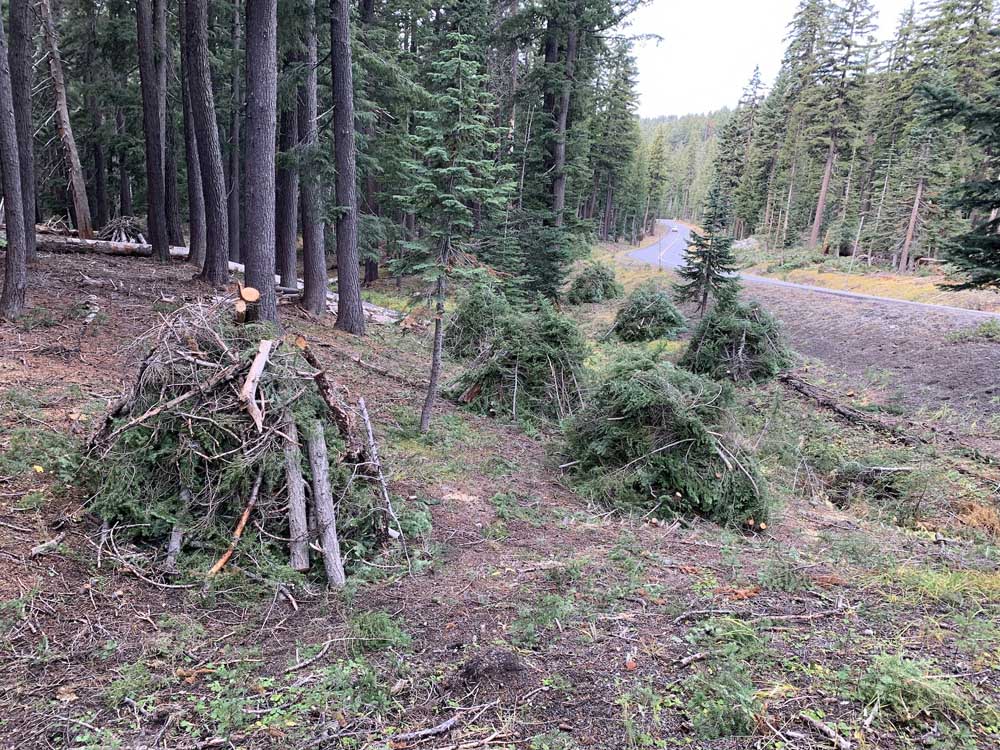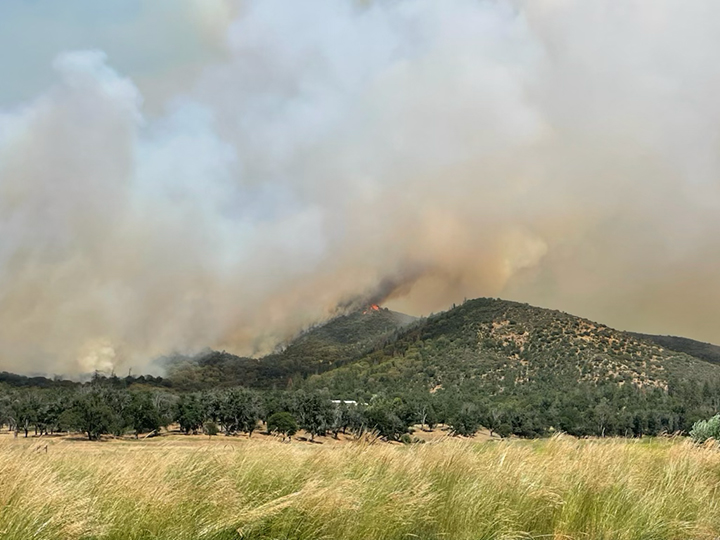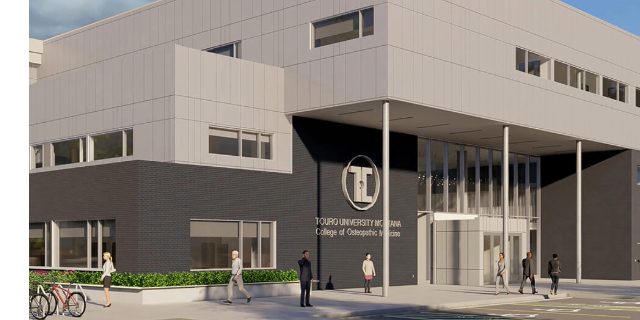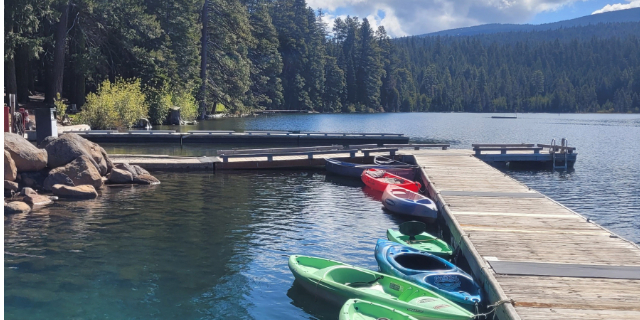Crater Lake National Park, regional forests move ‘from fire season to smoke season’
Published 2:30 pm Wednesday, November 8, 2023

- Tiny teepee stacks of wood line roadsides at Crater Lake National Park.
CRATER LAKE NATIONAL PARK — Ever wonder what those tiny teepee-like stacks of wood alongside roads at Crater Lake National Park and regional national forests are?
At Crater Lake, as elsewhere, those stacks of wood are part of ongoing efforts to reduce the possibility of massive forest fires. They’re part of “fuels-reduction” programs aimed at removing enough vegetation so that if a wildfire burns, it can be more easily managed and the short-term impacts are less severe.
“From fire season to smoke season,” says Phil Heitzke, Crater Lake’s fire management officer, of the smoke sometimes generated by the late fall-early winter burns.
Questions about the piles of wood stacks have increased at the park because many are located 100 to 150 feet from the road just inside the park’s South Entrance leading to park headquarters. In recent weeks, contract crews wielding hand tools have been hustling to remove underbrush and limbing trees then gathering them into hand-stacked piles. Expect those piles be seen for the next year or so.
Over the winter and months that follow, wood in those stacks will be allowed to dry out before they’re ignited, possibly in the late fall of 2024 or later.
At Crater Lake, Heitzke says the fuels-reduction program is almost halfway through its five-year plan. Earlier this week, about 8 acres were burned in Munson Valley near the Steel Center visitor contact station/park headquarters. Another 20 acres near the park’s south boundary off Highway 62 were also burned, while about 140 acres is scheduled to be burned near the North Entrance. Those piles had been created a year or longer before they were burned.
“Visitors probably won’t see that,” says Heitzke, noting the North Entrance Station, along with Rim Drive, is closed through the park’s usually long winters, which can last more than eight months.
Keeping the burning from creating obnoxious smoke is among the reasons why the burns are done during the cooler months in late fall. Heitzke notes Crater Lake fire managers work with other agencies, including the neighboring Fremont-Winema and Rogue River-Siskiyou national forests, private land owners and regional tribes to coordinate planning.
But the fuels-reduction program is about more than fires. Heitzke notes the process benefits a variety of wildlife by providing better habitat for forage while also minimizing the spread of pest insects and disease, removing unwanted species that threaten species native to an ecosystem, promoting the growth of trees and wildflowers, and helping to recycle nutrients back to the soil.
Over the ongoing fuels-reduction program, the park hopes to do prescribed burns on about 240 to 270 acres annually.
“This is a constant evolution,” Heitzke explains of the cooperative, multiyear effort. “It’s an ever-evolving process. It’s takes multiple steps and several years to get it (the forest landscape) back to where it should be. The goal is to make it (forestlands) less suspectible to fire.”
More projects planned at Crater Lake
The number of Crater Lake visitors significantly slims down during the park’s long winters, but work continues on various projects.
The most visible project is the ongoing effort to repair the Steel Center, which normally serves as the park’s main visitor contact station. The extensive repairs were originally scheduled to be completed in November 2022, but that date has now been extended to — hopefully — December. Whenever the work is completed, public affairs officer Marsha McCabe says it will take a month or longer to reopen the building.
Repairs to East Rim Drive, which began this past summer, are expected to continue for several more years. Last summer’s work, which included pavement overlays and full depth pavement rehabilitation, began in June and wrapped up in October. The completed repairs extend from the Cleetwood Cove trailhead/parking area to beyond Skell Head. Overall, repairing and stabilizing the 19 miles is expected to last up to five years at a cost of $56 million.
“They did make good progress,” McCabe reports of this past summer’s work.
Tentatively scheduled to begin in late September or early October 2024 are extensive repairs to the Cleetwood Cove Trail, which provides the only access to the lake and lake boat tours. It’s estimated the project, which includes replacing toilets near the boat docks, will take three or four years.
For more about Crater Lake, including current snow and road conditions, visit the park website at www.nps.gov/crla or call 541-594-3000.






